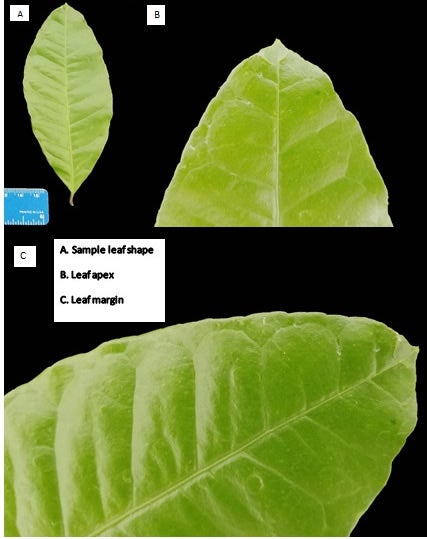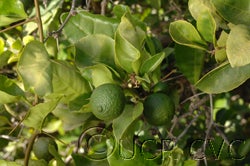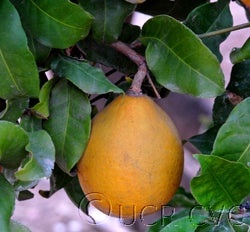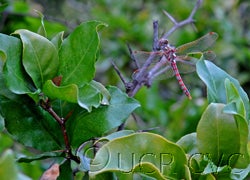Chevalier's aeglopsis
CRC 2878
PI 539143
Source
Received as seed from F.E. Gardner, Orlando, Florida, 1950.
Parentage/origins
Parents unknown.
Rootstocks of accession:
Own roots.
Season of ripeness at Riverside:
Year-round
Season of flowering at Riverside:
May to July
Notes and observations:
EMN, 5/1987: Both original seedling trees planted in 18B died. Replant of 1984 now looks good; another will be grown for 1988. If these trees both die, this accession should be kept only in the GH & LH at CRC.
EMN, 12/22/1987: Open growth, not as attractive as Aegle marmelos. No fruit yet.
EMN, 1/24/1990: Fruit similar to Aegle marmelos but more spherical to slightly elongate in shape, and slightly larger on average. Also probably more fruits with dark blush on this accession.
Description from The Citrus Industry Vol. 1 (1967):
"Shrub or small tree, branches numerous; spines solitary, straight, strong, pointed, 2-3.5 (sometimes 3-7) cm long; leaves simple, medium-sized, 5-12 X 2.5-7 cm, elliptical, rounded at the apex or short-acuminate, cuneate at base and merging gradually into the short, glabrous, wingless petiole (2-4 mm long), which is not articulated with the leaf blade; inflorescences small, axillary panicles, few-flowered (4-8) or sometimes many-flowered (20-40), pedicels slender (3-5 mm long); flowers glabrous, white, calyx 4-5 mm diam., with 4-5 short, wide lobes more or less rounded, petals 5 (sometimes 4), white, oblong-lanceolate, rounded at the apex, 9-12 X 3.5-5 mm, caducous, stamens 8-10, filaments free, linear, 5-6 mm long, anthers oblong, 2.5-3 X 1 mm; disk subcupulate, very large, 5-6 mm diam., 2.5-3 mm high, with about 10 rounded lobes; ovary ovoid, 2.5-3 X 2-3 mm, merging imperceptibly into the short style, locules 6 (sometimes 5), containing numerous ovules (12-18 ?) arranged in 2 series; fruits globose or pyriform, attenuate at the base when young, 6-9 cm diam., with 6 (sometimes 5) segments, 8-12 seeds in each segment pressed together and imbedded in a liquid, mucilaginous jelly secreted by the glands on the locule walls; peel semicoriaceous, green, becoming yellowish, 3 mm thick, with many nonodorous superficial glands; seeds ovoid, flattened, 12-16 mm long, 10-12 mm wide, and 4-7 mm thick, with a parchment-like, glabrous testa.
Aeglopsis chevalieri is the only Hard-Shelled Citroid Fruit Tree that has flowered and set fruit freely in the orange house of the U.S. Department of Agriculture at Washington, D.C., while still a small tree, 2 or 3 meters high . It flowers profusely and bears a few small, pyriform, only moderately hard-shelled fruits of brilliant orange-brown color. The seeds germinate freely, but the cotyledons, although turning green, remain buried in the soil. Seedlings of A. chevalieri planted some years ago in David Fairchild's collection of Citrus and related plants in his tropical garden, "The Kampong," at Coconut Grove, Florida, have made a remarkably vigorous growth. They have flowered profusely and have ripened abundant fruits filled with good seeds.
Seedling plants of this species, so easily obtained in quantity, make excellent rootstocks on which to graft Balsamocitrus, Afraegle,and also Aegle, genera which seldom fruit in the United States and which are also hard to propagate from cuttings. Aeglopsis seedlings were used not only to propagate the rare East African Balsamocitrus dawei by grafting the latter species on the young seedlings but also to induce rooting of Y-cuttings of Balsamocitrus dawei (see Swingle, Robinson, and May, 1929, p. 79).
Availability
Not commercially available in California.
USDA Germplasm Resources Information Network page for Aeglopsis chevalieri




